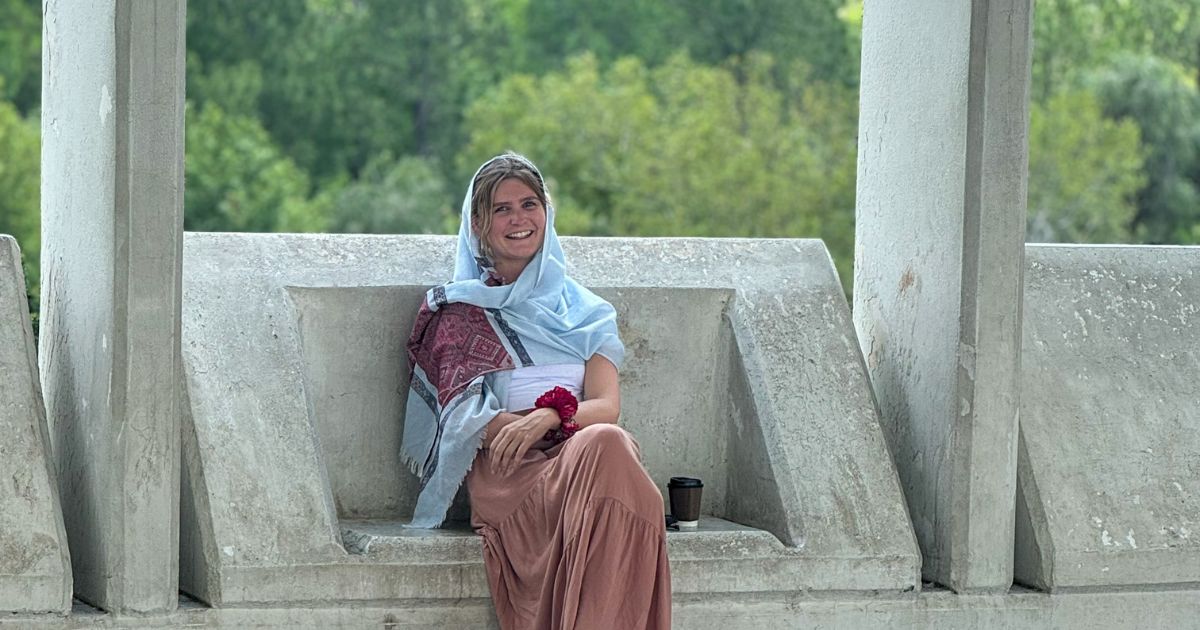
The best way to spend two weeks in Pakistan
From conquering base camps to living with local families, this ultimate 2-week Pakistan itinerary will show you a country that’s as breathtaking as it is misunderstood.
Straight up, two weeks is the absolute minimum you should spend in Pakistan. I’m on my third year of visiting this extraordinary country, and I still feel like I’ve only scratched the surface.
If you’re short on time, don’t worry, Pakistan has a way of embedding itself in your heart and mind, drawing you back time and time again.
No trip here is complete without feasting on mouthwatering local dishes, sipping countless cups of chai and spending time disconnecting in the phenomenal mountains.
This ultimate 2-week itinerary strikes the perfect balance between culture, trekking, vibrant cities, and authentic local experiences. I’ve also included a few bonus spots and hikes at the end in case you’ve got more time.
And if you’re keen to explore Pakistan, but don’t want to go it alone, you can experience this very route with us on our Best of Pakistan: Hikes, Hospitality and Hot Chai group tour.
Why should you visit Pakistan?
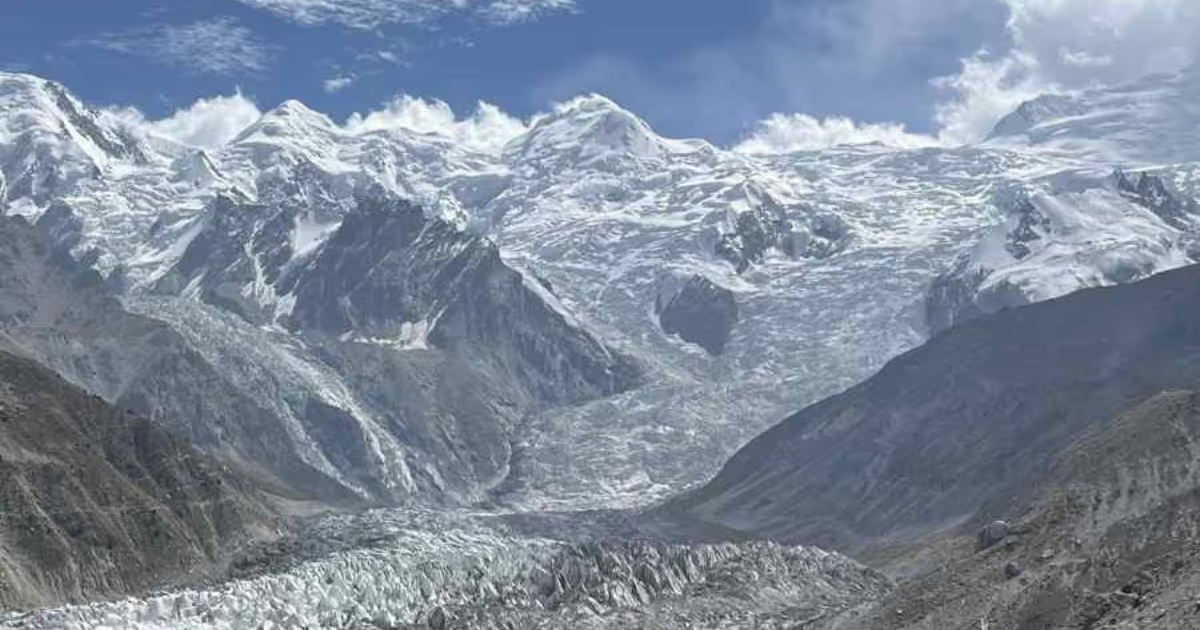
Pakistan is a rising star on the global tourism stage. Slowly, more people are realising it’s a top-class hiking destination, home to five of the world's fourteen 8,000-meter (26,000ft) peaks, and not so much the dangerous country that should be avoided at all costs, like mainstream media likes to present.
Even if you’re not a big hiker, Pakistan deserves a top spot on every food-lover's bucket list. The South serves up bold, spicy flavours, while the North offers fresh, organic, farm-to-table meals that reflect the simplicity of mountain life. Pakistani cuisine is hands down my favourite – don’t get me started on the variety of bread, like roti, naan, and paratha.#
Culturally, Pakistan is as enriching as it is surprising. A visit here will challenge your assumptions, broaden your perspective, and leave you with a deeper understanding of its traditions, hospitality, and the role of religion in daily life.
The best 2-week Pakistan itinerary
Day 1-2: Explore the historical sites of Lahore
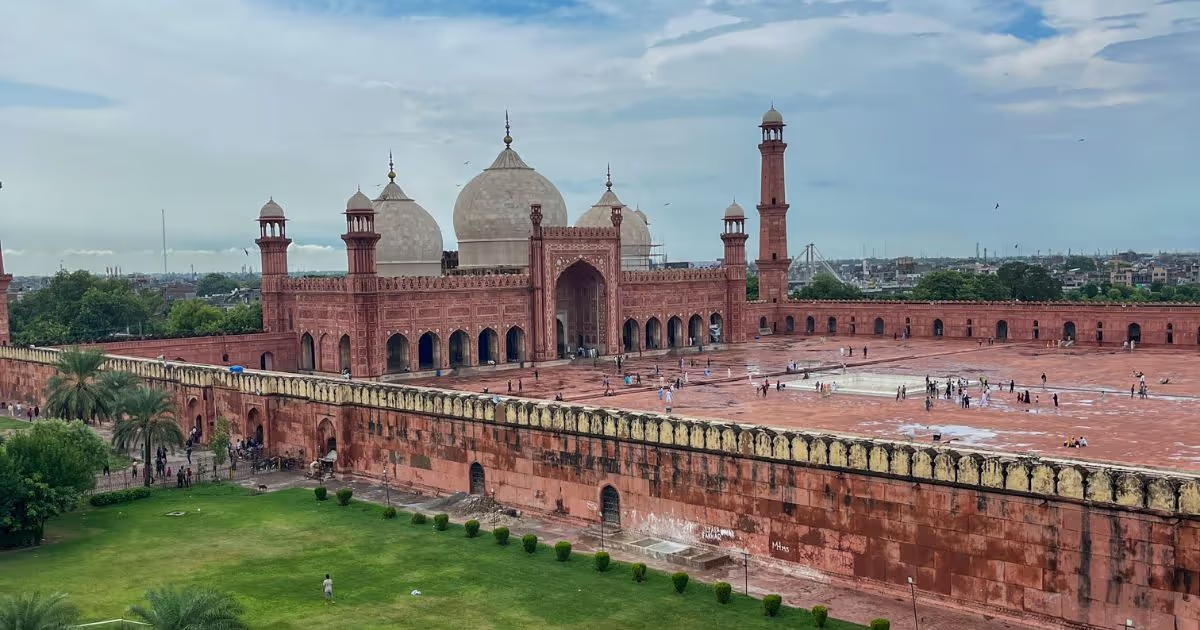
Most international flights land early in Lahore, so use your first morning to catch up on rest and ease into the rhythm of the city. You’ll need that energy later because the Wagah Border ceremony is pure adrenaline.
Every afternoon, crowds gather at the border between India and Pakistan for a patriotic showdown like no other. Think fierce marching, intense chanting, sky-high leg kicks, and a vocal battle to out-cheer the other side. It’s theatrical, chaotic, and completely unforgettable. It’s a wild first taste of Pakistan’s passion and pride.
On our Pakistan group trip, we explore a hidden side of the city by visiting a secret speakeasy where we mingle with locals and experience a community off-limits to most tourists.
Day two kicks off with a deep dive into Lahore’s rich history and Mughal grandeur. Explore architectural gems like the stunning Badshahi Mosque, the intricately tiled Wazir Khan Masjid, and the UNESCO-listed Lahore Fort.
For lunch, head to Haveli Restaurant, which offers unbeatable views overlooking the Badshahi Mosque. Trust me, it’s one of the most memorable meal spots you’ll ever experience.
After lunch, it’s time to hit the road and make your way to Islamabad, about a five-hour drive that gives you a chance to rest, reflect, and get excited for what’s next.
Day 3: Travel to Northern Pakistan
.avif)
To reach your next destination, Chilas, the jumping-off point for the remarkable Fairy Meadows, I recommend hiring a private driver to cover the 11-hour journey. It’s a lot more comfortable, faster, and you have the flexibility to stop whenever you like.
That said, budget travellers can take a local bus, or if you’re short on time, consider flying from Lahore or Islamabad to Skardu, then making the drive to Chilas from there.
Transport logistics are often one of the most challenging aspects of travelling in Pakistan. If you'd rather skip the stress, join our Pakistan group tour. We travel in a private, air-conditioned bus with our legendary local driver who knows every scenic stop and roadside chai spot like the back of his hand.
Day 4-6: Fairy Meadows and Nanga Parbat Basecamp
Hop into a 4x4 at Raikot Bridge for a heart-pounding ride along what’s often called one of the most dangerous roads in the world. Don’t stress, the drivers are seasoned pros who have navigated this track hundreds, if not thousands, of times.
The drive ends at the remote village of Tattu, where the real adventure begins: a 3-hour uphill hike with around 400m of elevation gain, leading you to the stunning Fairy Meadows at 3,300m (10,800ft).
There’s nothing quite like sipping a warm cup of chai with Nanga Parbat, the world’s ninth-highest mountain, towering in the distance. It’s one of my absolute favourite moments in all of Pakistan.
Hike to Nanga Parbat Base Camp
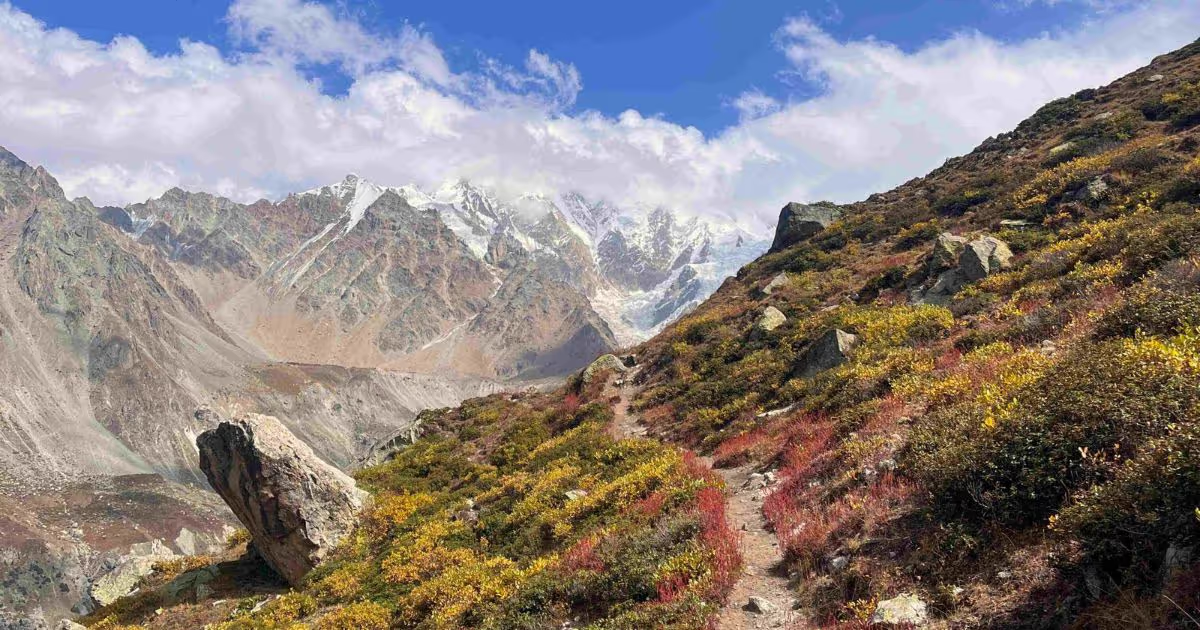
The following day, you can either chill at Fairy Meadows or take on the 8-9 hour trek to Nanga Parbat basecamp at 3,900m (12,800ft). The trail is challenging, but extremely rewarding, with the Raitkot Glacier on one side and the majestic Nanga Parbat, a giant, towering over you ahead.
On day six, with your legs a little achey from the big hike the day before, head back the way you came, jump back in the jeep along the world’s most dangerous road, and continue your journey to Karimibad.
Day 7: Rest day in Karimabad and Eagles Nest
Known for its precious stones, dried fruits, local crafts, and panoramic mountain views, Karimabad is one of my favourite places in Pakistan. It’s the perfect place to take a relax.
Grab a coffee and the famous walnut cake at Cafe de Hunza and enjoy some out-of-this-world food at Zapu Food Corner.
After a chilled morning, you can drive or hike up to Eagles Nest, a small village perched at 2,850 meters (9,350ft). It offers one of the most breathtaking panoramic views in the region, overlooking several snow-capped peaks of the Karakoram Range, including Ultar Sar, Lady Finger Peak, Diran, and Rakaposhi. Sunset here is a must!
It’s up to you whether you want to spend the night in Eagles Nest or head back down to Karimabad.
Day 8-9: Rakaposhi Base Camp
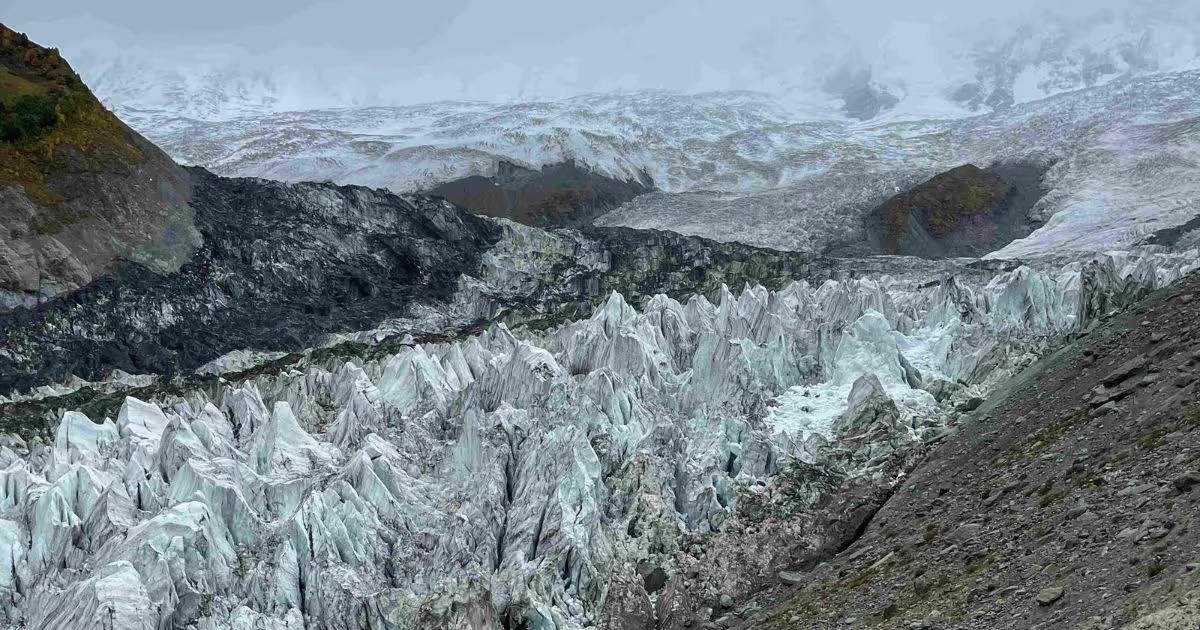
Your next big hike of the trip is to Rakaposhi base camp. The mountain itself reaches an impressive height of 7,788m (25,550ft), making it the 27th highest mountain in the world. Fortunately, base camp sits at 3,500m (11,500ft), and the steep elevation gain is spread across two days.
You’ll start the hike in Minapin Village and spend a night camping under the stars in Hapakun Campsite. This part takes around 3-5 hours.
Hike to Rakaposhi Base Camp
The next morning, set off for Rakaposhi base camp. It’s a relatively short 4–5 km route, but don’t underestimate it; the steep incline means it’ll take around 3 to 4 hours.
The real highlight of the day isn’t just reaching base camp, but catching your first breathtaking glimpse of the Diran Glacier along the way.
After an obligatory chai (this is how you celebrate any trek in Pakistan), you can hike back down to Minapin in a few hours.
You could spend the night in the area, but I recommend hopping in a car and driving to Ghulkin, a small village in the mountains not too far from the famous Passu Cones.
On Stay Wild’s Pakistan group trip, we stay with the kindest local family in their homestay. I’ve spent weeks with them and can lovingly call them my Pakistani second family.
Day 10: Baskochi Meadows and Passu Bridge

Attabad Lake’s vivid blue waters are a striking reminder of nature’s power, formed by a landslide a few years ago. Here you can cruise around the lake on a boat before hiking to one of Pakistan’s most famous viewpoints. Baskochi Meadows offers sweeping views of the valley and lake from above.
For those craving a bit more adrenaline, nearby, the Passu Hanging Bridge offers a thrilling (and slightly nerve-wracking) crossing.
Day 11: Relax in Ghulkin
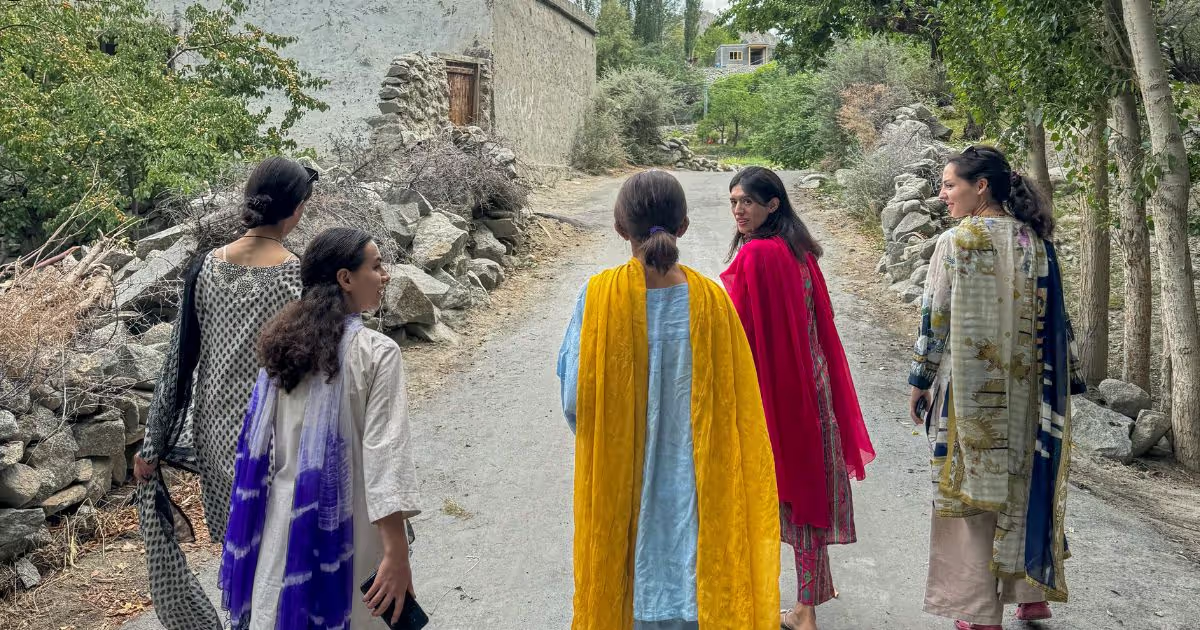
Spending a bit more time in Ghulkin allows you to slow down and truly soak up village life. It’s a chance to connect with the local Ismaili Muslim community, learn about their unique culture, and leave space for the kind of spontaneous moments that make travel unforgettable.
One year, I put on my shalwar kameez (the traditional Pakistani outfit) and was taken around the village by a group of women on an impromptu food and chai tour. I visited each of their houses where they prepared incredible food, drinks and sometimes a little entertainment for me. It was one of those unexpected, joy-filled experiences that you never forget.
You could also visit the local school or add in a visit (or swim) at Borith Lake and a short hike to witness the glistening sea of ice that is Passu Glacier.
There’s plenty to keep you entertained in this tiny village.
Day 12: Travel back to Islamabad
It’s time to leave Northern Pakistan and make your way back to Islamabad. After days of adventure, the long bus ride is the perfect chance to catch up on sleep.
The drive can take anywhere from 14 to 20 hours, depending on road conditions, landslides, and the number of stops you make.
Getting around can be the most stressful part of getting around Pakistan. If you want to avoid this, you can join one of our Pakistan group trips, which offer a private bus, an experienced driver, and, most importantly, air conditioning.
Day 13-14: The capital of Pakistan
.avif)
Islamabad offers an entirely different vibe from Lahore, blending modern city life with natural beauty. Purpose-built to be the new capital in the 60s, Islamabad’s master plan was designed by a Greek architect who did a very good job. In my opinion, many Western capital cities could learn a great deal from Islamabad.
Be sure to visit Faisal Mosque, the fifth-largest in the world, before heading to the Margalla Hills for a panoramic view of the city.
If you’ve booked round-trip tickets from Lahore, you can hop on a 5-hour bus to where it all started, or you can fly out of Islamabad International Airport.
Other unmissable destinations and hikes in Pakistan
As I mentioned at the outset, while this itinerary strikes the perfect balance between culture, nature, and cities, showcasing the best of Pakistan, there is still much more to see and experience.
Here are some extra places and hikes that you can add to this ultimate Pakistan itinerary:
Skardu
While Skardu itself isn’t the most exciting city, it’s the gateway to some of the best hikes in Pakistan. Many people come here to embark on popular hikes like the K2 Base Camp trek, the Skoro Pass trek, and hikes in the Hushe Valley.
Shorter, less strenuous options include Marsur Rock, Deosai National Park and the organic village of Nansoq.
Patundas Hike
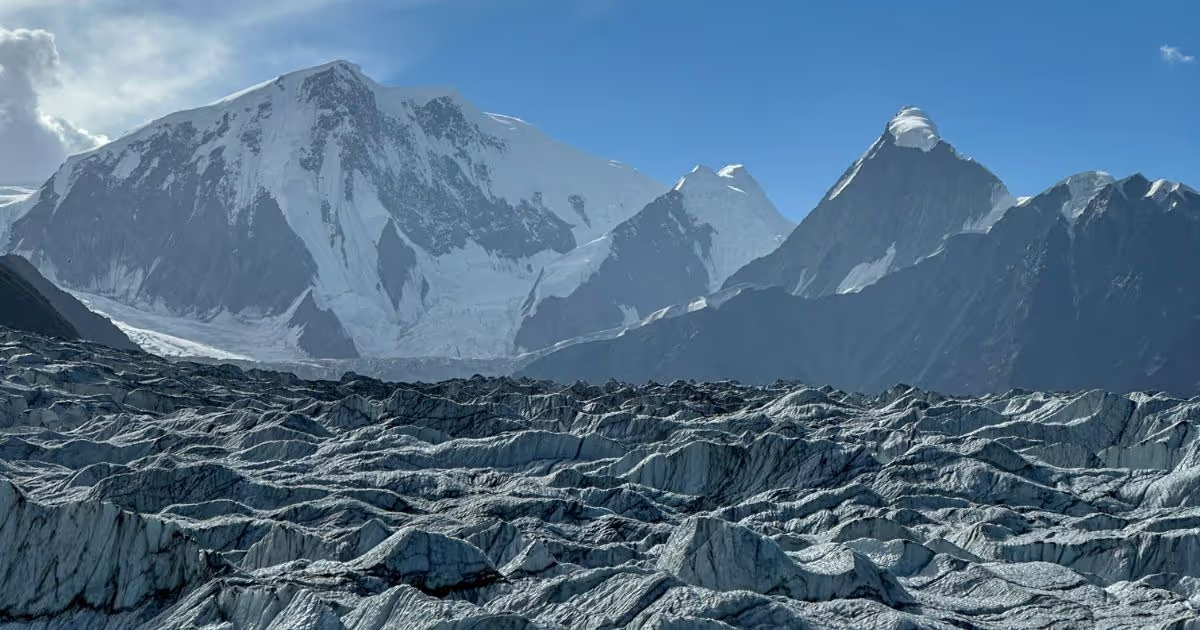
Patundas is my favourite hike in Pakistan. Taking you to heights of 4,200m (13,800ft), the panorama from the top, overlooking several 7,000m (23,000ft) mountains, is remarkable. But for me, the highlight was crossing Passu Glacier, a terrifying, adrenaline-inducing and unforgettable experience.
This hike can be done in 2-3 days, and I highly recommend getting a guide to help you safely cross the glacier.
When is the best time to visit Pakistan?
If hiking is your main reason for visiting Pakistan – and honestly, it should be – then timing your trip with the northern region’s best weather is essential. That’s where you’ll find the most jaw-dropping trails and landscapes.
Best time for hiking in Pakistan
The ideal time to visit is from May to October, when the mountain routes are clear and major roads, such as the Karakoram Highway, are usually open and free of snow.
From June to August, the north is in full hiking season mode. This is the time to explore legendary places like Hunza, Skardu, and Fairy Meadows. Keep in mind that even in the mountains, temperatures can get surprisingly warm.
Personally, I love Pakistan in September. The intense summer heat begins to fade, both in the cities and the highlands, but the days remain comfortably warm. Hang around until late in the month, and you’ll catch those early autumn colours lighting up the valleys in golden and amber tones.
Best time for visiting cities in Pakistan
If you're thinking of heading south instead, winter (December to February) is a great time to do it. While the north is snowed in and not ideal for trekking, places like Karachi, Lahore, and the deserts are at their best.
FAQs
Do I need a visa for Pakistan?
Tourists from 120 countries can now obtain a visa prior to arrival, valid for 90 days, at no cost. You can check this list of eligible countries via Pakistan’s official visa site.
The visa can be processed within 24-48 hours, but we advise not leaving it to the last minute. The new handy app makes applying for your Pakistan visa so much easier than before. All you’ll need is your passport and a photograph.
As with everything involving the trip, we’re on hand to help with the visa process.
What should I wear in Pakistan as a solo female traveller?
Pakistan is a Muslim country, so you will be required to dress conservatively. This means having your knees and shoulders covered. If you enter a mosque, your hair also needs to be covered. We cover dress code in Pakistan in more detail above.
Is Pakistan safe?
In recent years, Pakistan has made noticeable progress in boosting tourism and improving internal security, particularly in areas popular with travellers.
Cities like Lahore, Islamabad, and Karachi have become more accessible, while northern destinations such as Hunza Valley, Skardu, and along the Karakoram Highway continue to welcome more tourists every year.
We’ve been running group tours in Pakistan for three years now, and guests have constantly commented on how safe they have felt.
Who is Stay Wild Travel?
Stay Wild organizes group trips for women to adventurous destinations — places you may have thought were too challenging to explore solo or too complicated to plan.
Our tours are all about authentic local experiences, empowering women, and building meaningful connections with the people, culture, and traditional cuisines of each destination.
You’ll share these unforgettable moments with a group of like-minded women, completely stress-free.
Do you run group trips to Pakistan?
We've been running group trips to Pakistan for 3 years and have shown over 60 people how incredible this country is. Check out our women-only Best of Pakistan: Hikes, Hospitality and Hot Chai group tour.
Keep Exploring
Discover more travel tips, recommendations and stories from inspiring female travellers.
.avif)


.jpg)

